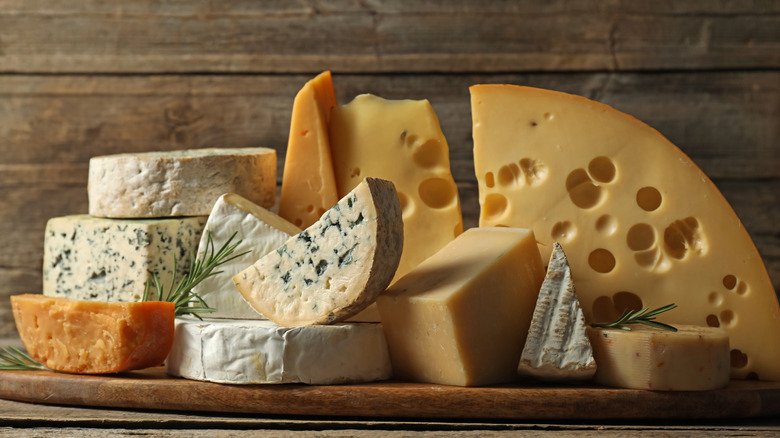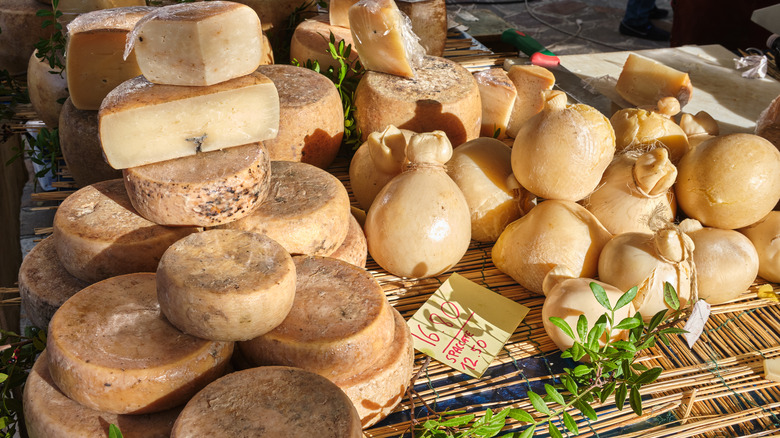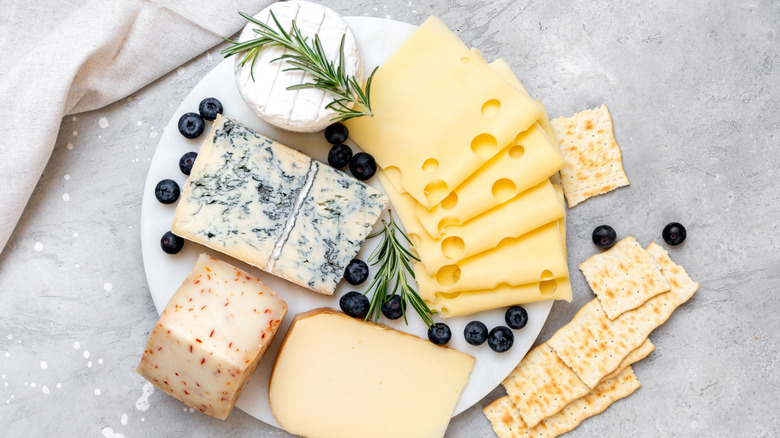This Rare Cheese Is Considered The Most Dangerous In The World
It's rare that someone suggests you eat a dish that is still wriggling. But on the Italian island of Sardinia, there's a delicacy that does just that. Unlike your standard cheeses that are fermented, casu marzu (also known as "rotten cheese" or "maggot cheese") is fostered with the help of live insect larvae from cheese flies (Piophila casei). These maggots burrow into a wheel of traditional sheep's milk cheese, pecorino sardo, digesting its fats and excreting a gooey, creamy texture with an intensely pungent flavor. When served, casu marzu usually still has live maggots at the bottom that have finished consuming the top part. This unusual process may sound like food gone wrong, but to Sardinians, it's a special and time-honored treat.
All of this has earned the cheese a notorious reputation. In 2009, Guinness World Records named casu marzu the most dangerous cheese in the world. Health authorities warned that the live larvae can survive in the human digestive tract, potentially causing intestinal problems. Add to that the fact that the wriggling maggots can leap several inches into the air, sometimes toward your face, and it's easy to see why this cheese has alarmed regulators and the uninducted. All of this means that the commercial sale of casu marzu has officially been banned under European Union regulations — but that doesn't mean some people don't still enjoy it.
The rotten cheese has some ardent fans
For many Sardinians, casu marzu is a beloved tradition. In a video by Culture Trip, a local shepherd, Sergio Bituleri, defended the food: "They say that it's very dangerous, but that's not true at all. ... I have known the rotten cheese for as long as I remember." He also described how the larvae work the cheese to create a "spicy" and "really tasty" cream. Bituleri produces casu marzu and wishes people weren't so prejudiced against its origins.
The taste of casu marzu is often described as bold, rich, and unforgettable. The texture becomes spreadable, with flavors that range from earthy and tangy to spicy and lingering. Some even say it carries aphrodisiac qualities. For locals, though, it's not just about taste — it's about centuries of tradition. Though there aren't written accounts about this specific cheese, similar dishes have been described going as far back as Roman times. Today casu marzu is generally reserved for village festivals and family celebrations, passed down as part of Sardinia's pastoral culture. And locals say the hype about it being dangerous is overblown. "As far as I can tell, there isn't a single person that ever got sick from eating it," Bituleri noted.
Isn't all cheese moldy anyway?
Hearing about live maggots in cheese may make you wonder: Isn't all cheese, in some sense, "rotten"? The answer is more nuanced. Cheese is created by fermenting milk, usually by adding bacteria. These organisms feed on natural sugars and convert them into lactic acid, thickening the cheese and giving it a unique taste. Different bacterial cultures produce different acids, enzymes, and byproducts, which is why Swiss cheese gets its nutty flavor and holes, while mozzarella develops a bright flavor and chewy texture.
Many popular cheeses — like blue cheese and Camembert — rely on specific fungi instead of bacteria to develop their distinct flavors, textures, and aromas. In the case of blue cheeses, strains of Penicillium mold create the signature blue veins and pungent, tangy taste (here are some great alternatives if you're intimidated by mold). Similarly, French Camembert, which may be going extinct, depends on the Penicillium camemberti to achieve its creamy consistency and umami depth.
Unlike Casu Marzu, however, these are molds, not larvae, and they are carefully cultivated under controlled conditions. These sorts of fungi in cheese can actually be beneficial, breaking down proteins and fats in ways that enhance flavor. That said, obviously not all mold is edible—and you can get sick from accidentally eating certain strains.



